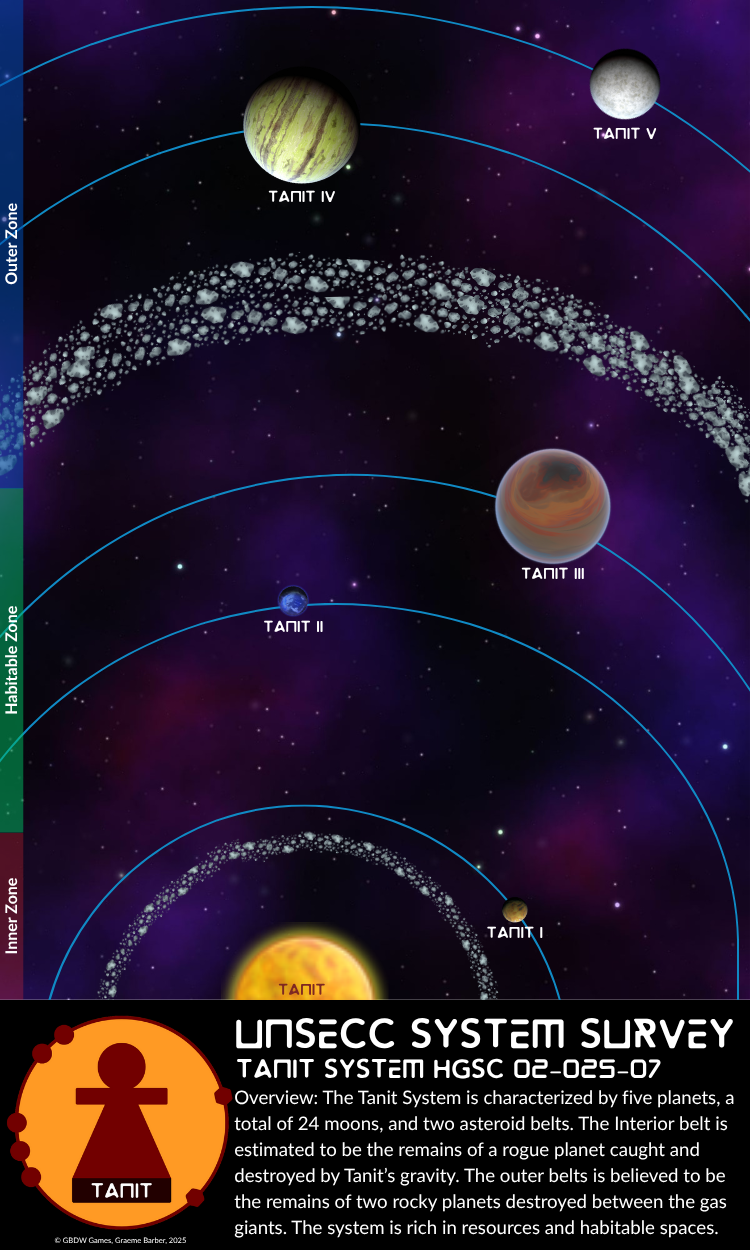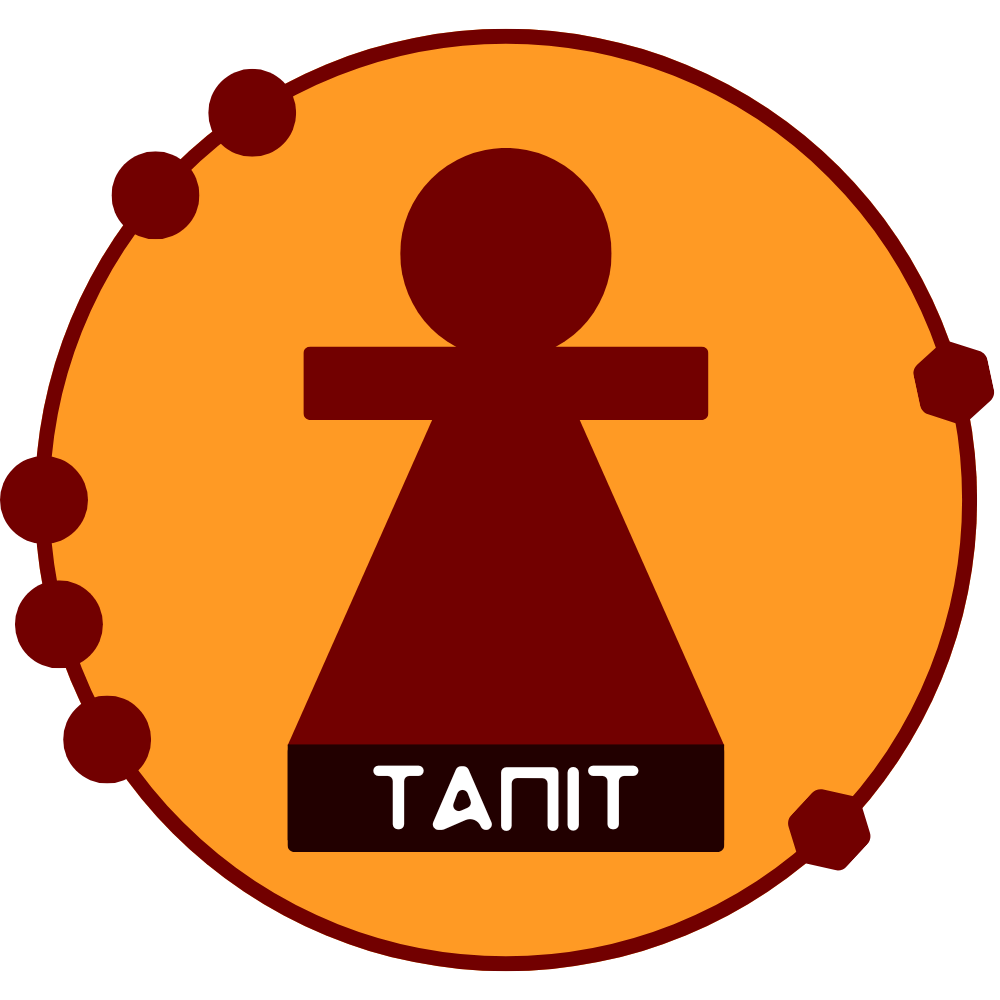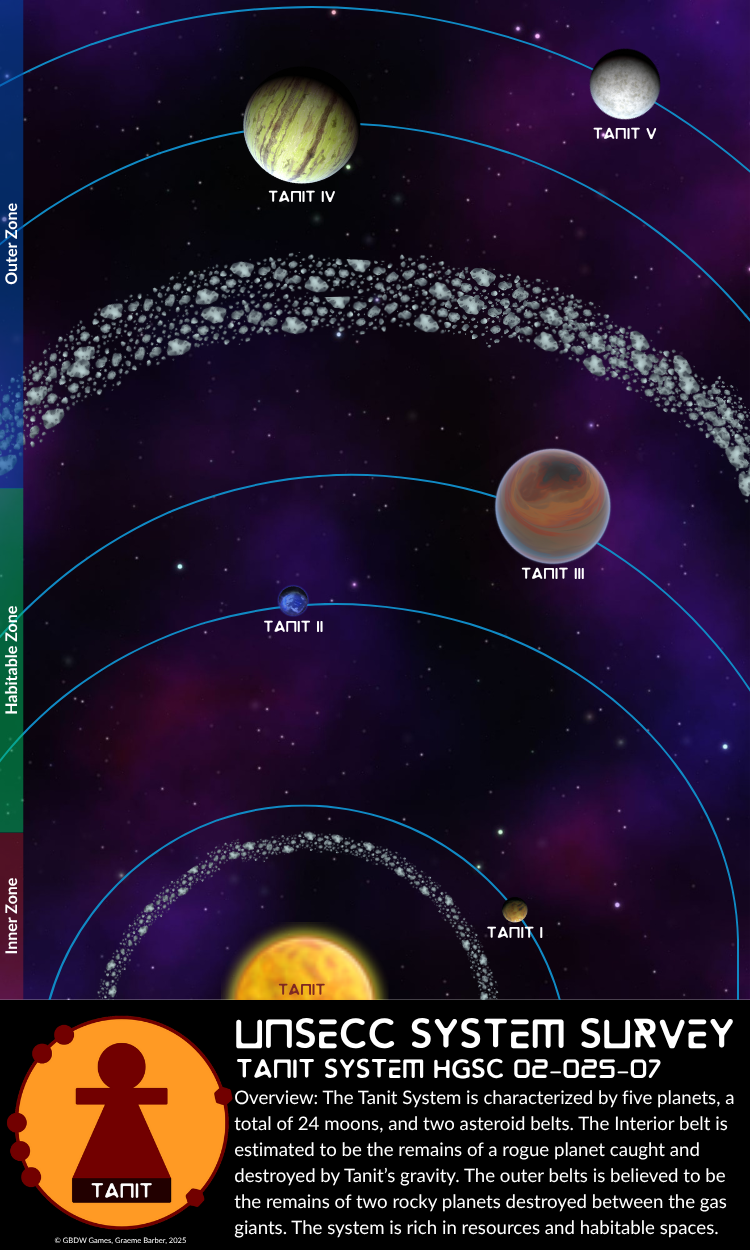Tanit System
The Tanit System is at the furthest extent of human exploration and colonization, located in the Outer Arm of the Milky Way. Discovered in 2200, by 2350 it was a successful if distant colony system. The Tanit System is notable for its three habitable bodies, Tanit II (Kushor), and two of Tanit III's (Eshmun) moons, Carteia and Barea.
Geography
Tanit itself is a young yellow star, orbited by an asteroid belt, two rocky planets and one gas giant (Melqart, Kuthor, and Eshmun), a second asteroid belt, a gas giant (Ashtarte), and a an ice giant (Reshef). Tanit II, Kuthor, is precisely in the Goldilocks Zone of the system, making it the most habitable of the three available places. Tanit III is on the periphery of the Goldilocks Zone, but adds sufficient warmth to its moons that two are capable of sustaining terrestrial life.
Natural Resources
The Tanit System is rich in natural resources, not in part because three planets have been reduced to asteroid belts by the grinding action of gravity. The primary reason they weren't more heavily exploited prior to the war was simple, the system was too many jumps away to make it financially viable. However, this left the residents of the system with a full selection once they were able to start harvesting. However, only Tanit II, Kuthor, enjoys functional autarchy. The lunar settlements over Tanit II, and the ones around Tanit III, Eshmun, still require significant supports in terms of raw materials and particularly for food.
The Tanit System UNSECC Standard Identification Logo
Alternative Name(s)
The Grinder
Type
Solar System
Included Locations
Owning Organization
Inhabiting Species









Comments